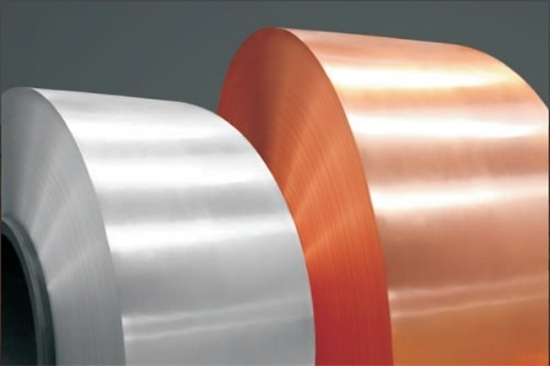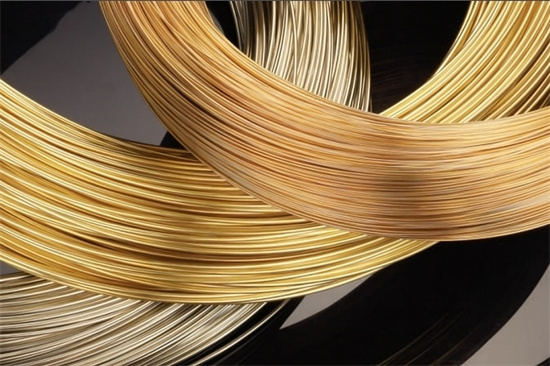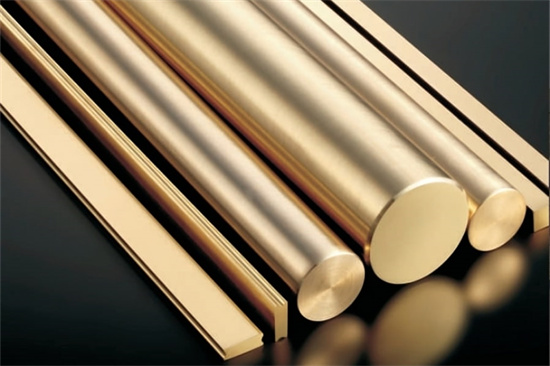


CuCrZr: The Ultimate Choice for High-Temperature and Wear Resistance
Low MOQ
Provide low minimum order quantity to meet different needs.
OEM & ODM
Provide customized products and design services to meet unique customer needs.
Adequate Stock
Ensure fast order processing and provide reliable and efficient service.
Customer Satisfaction
Provide high quality products with customer satisfaction at the core.
share this article
Table of Contents
In the world of high-performance materials, CuCrZr (Copper-Chromium-Zirconium) stands out as a versatile alloy with exceptional qualities. Its unique blend of strength, thermal conductivity, and corrosion resistance makes it a go-to option for demanding applications across multiple industries, from aerospace to semiconductor manufacturing.
In this comprehensive guide, we’ll dive deep into every aspect of CuCrZr, from its composition and mechanical properties to its applications and pricing. Whether you’re a materials engineer, a procurement specialist, or just someone curious about the alloy’s capabilities, this guide has you covered.
Overview
CuCrZr is an alloy composed mainly of copper (Cu), with the addition of chromium (Cr) and zirconium (Zr). This combination creates a material that offers high strength, excellent electrical and thermal conductivity, and superior resistance to wear and deformation at elevated temperatures. These characteristics make CuCrZr a popular choice in applications where both mechanical performance and thermal stability are critical.
Key Features :
- High Electrical Conductivity: Retains a significant portion of copper’s natural conductivity, making it ideal for electrical applications.
- Thermal Stability: Excellent performance under high temperatures, maintaining strength and preventing deformation.
- Corrosion Resistance: Good resistance to oxidation and corrosion, particularly in harsh industrial environments.
- Wear Resistance: Added chromium and zirconium enhance the alloy’s ability to resist wear and mechanical fatigue.
Composition and Properties
The unique properties of CuCrZr stem from its carefully balanced chemical composition, which enhances copper’s inherent qualities. Let’s break down the composition and see how each element contributes to the alloy’s performance.
Chemical Composition Breakdown
| Element | Percentage (%) |
|---|---|
| Copper (Cu) | 97.5 – 99 |
| Chromium (Cr) | 0.5 – 1.2 |
| Zirconium (Zr) | 0.03 – 0.3 |
| Other Elements | Trace amounts |
- Copper (Cu): Provides the base conductivity and thermal properties of the alloy.
- Chromium (Cr): Increases strength, hardness, and resistance to wear.
- Zirconium (Zr): Enhances the alloy’s high-temperature performance and resistance to deformation.
Mechanical and Physical Properties
| Property | Typical Value |
|---|---|
| Tensile Strength | 400 – 600 MPa |
| Yield Strength | 300 – 500 MPa |
| Hardness | 120 – 170 HV |
| Electrical Conductivity | 75 – 85% IACS |
| Thermal Conductivity | 320 – 350 W/mK |
| Density | 8.9 g/cm³ |
| Elongation | 10 – 25% |
| Corrosion Resistance | Excellent in industrial environments |
Why the Composition Matters:
- Chromium and zirconium are added to enhance strength and wear resistance without sacrificing too much of copper’s conductivity.
- CuCrZr has the ability to maintain its properties at high temperatures, which is especially critical in applications like welding electrodes or semiconductor components.
Applications: Where It Shines
The versatility of CuCrZr makes it a popular material across a wide range of industries. Its ability to balance strength and conductivity is particularly useful in applications that demand consistent performance under thermal stress and mechanical wear.
Common Applications
| Industry | Applications |
|---|---|
| Aerospace | High-stress components, heat sinks, turbine blades |
| Automotive | Electrical connectors, switchgear, welding tips |
| Electronics | Semiconductor heat sinks, RF connectors, transistors |
| Energy | Power distribution, electrodes, current-carrying components |
| Welding | Resistance welding electrodes, tips, and shanks |
| Plastics Manufacturing | Mold inserts, cores, and cavities |
Why CuCrZr Is the Ideal Material for These Applications:
- Aerospace: CuCrZr is used in critical components that require high strength and thermal stability—such as heat sinks and turbine blades—where exposure to high temperatures is common.
- Electronics: The alloy’s excellent thermal conductivity makes it an ideal choice for heat sinks and semiconductor manufacturing, where precise control of heat dissipation is necessary.
- Welding: CuCrZr is a top material for resistance welding tips, as it can withstand intense thermal cycling while maintaining a high level of electrical conductivity.
Specifications, Sizes, and Grades
When selecting CuCrZr for a project, it’s important to know the different specifications, sizes, and grades available. This section covers the typical options you’ll encounter when sourcing CuCrZr for your specific needs.
Specifications and Sizes
| Specification | Details |
|---|---|
| Form | Rods, sheets, plates, bars, wires |
| Diameter Range (Rods) | 1 mm to 200 mm |
| Thickness Range (Sheets) | 0.3 mm to 12 mm |
| Temper | Annealed, hot-rolled, cold-drawn |
| Standards | ASTM B224, EN 12163, BS 2874 |
Grades
| Grade | Key Characteristics |
|---|---|
| CuCrZr A | High electrical conductivity, moderate strength |
| CuCrZr B | Balance of strength and conductivity, typical for welding applications |
| CuCrZr C | Higher strength, reduced conductivity, ideal for high-stress environments |
Why Standards Matter:
Adhering to industry standards ensures that the CuCrZr you source meets quality and performance expectations. Always verify that your material complies with the relevant specifications for your intended application.
Suppliers and Pricing
Sourcing CuCrZr can vary depending on factors like grade, quantity, and supplier location. Knowing where to get the best deals without sacrificing quality is essential for any project, especially when working with high-performance materials.
Suppliers and Pricing Details
| Supplier | Location | Price Range (per kg) | Delivery Time |
|---|---|---|---|
| Specialty Metals Ltd. | USA | $30 – $55 | 2-3 weeks |
| AlloyTech Industries | Europe | $28 – $50 | 1-2 weeks |
| AsiaMet Metals Corp. | China | $25 – $45 | 3-4 weeks |
| CopperAlloys Global | India | $27 – $48 | 2-4 weeks |
| Superior Metal Solutions | UK | $32 – $52 | 1-2 weeks |
Factors Affecting CuCrZr Pricing:
- Grade: Higher strength grades, like CuCrZr C, tend to be more expensive due to their enhanced performance characteristics.
- Quantity: Bulk orders often come with significant price reductions, so buying larger quantities may save you money in the long run.
- Form: CuCrZr in wire or plate form may cost more than rod or bar, as additional processing is required.
Advantages and Limitations
While CuCrZr is widely regarded for its strength and thermal conductivity, it’s important to weigh the pros and cons when selecting this alloy for your project. Below, we’ll examine some of the advantages and limitations of CuCrZr.
Advantages and Limitations
| Advantages | Limitations |
|---|---|
| High electrical and thermal conductivity | Higher cost compared to standard copper alloys |
| Excellent high-temperature strength | Slightly lower conductivity than pure copper |
| Good corrosion resistance | Requires precise heat treatment for optimal performance |
| Superior wear and fatigue resistance | Limited availability in certain forms or sizes |
Is CuCrZr Right for Your Project?
If you’re working on a project that demands high mechanical strength, thermal stability, and good conductivity, it is likely your best option. However, if cost or maximum conductivity is your top priority, you might want to consider pure copper or other copper alloys.
Comparing CuCrZr with Other Copper Alloys
When selecting the right material for your application, it’s often helpful to compare several options. Here, we’ll compare it with other popular copper alloys like C10100 (Oxygen-Free Copper) and CuNi2Si to help you make an informed decision.
CuCrZr vs. C10100 and CuNi2Si
| Property | CuCrZr | C10100 (Oxygen-Free Copper) | CuNi2Si |
|---|---|---|---|
| Tensile Strength | 400 – 600 MPa | 200 – 300 MPa | 500 – 750 MPa |
| Yield Strength | 300 – 500 MPa | 70 – 100 MPa | 350 – 500 MPa |
| Electrical Conductivity | 75 – 85% IACS | 100% IACS | 30 – 50% IACS |
| Thermal Conductivity | 320 – 350 W/mK | 380 – 400 W/mK | 180 – 220 W/mK |
| Corrosion Resistance | Excellent | Good | Excellent |
| Cost | Moderate | Low | Moderate |
| Applications | Aerospace, welding, electronics | High-conductivity wiring | High-stress connectors, springs |
Key Takeaways:
- It provides a balance of strength and conductivity, making it suitable for high-performance applications where both mechanical and electrical properties are crucial.
- C10100 is the go-to choice when maximum conductivity is required, but it lacks the strength and thermal stability of CuCrZr.
- CuNi2Si is better suited for applications that demand higher mechanical strength at the expense of conductivity.
Frequently Asked Questions (FAQ)
To further clarify the properties and potential uses of CuCrZr, here are some frequently asked questions about this alloy.
| Question | Answer |
|---|---|
| What is CuCrZr used for? | It is commonly used in industries like aerospace, electronics, and welding for components requiring both strength and conductivity. |
| How does CuCrZr compare to pure copper? | It offers significantly higher strength and wear resistance, but it has slightly lower electrical conductivity compared to pure copper. |
| Is CuCrZr suitable for high-temperature applications? | Yes, it performs exceptionally well under high temperatures, making it ideal for use in welding electrodes and industrial applications. |
| How much does CuCrZr cost? | The price of CuCrZr ranges from $25 to $55 per kg, depending on the grade, form, and supplier. |
| What are the main benefits of CuCrZr? | It combines high strength, thermal stability, and good electrical conductivity, making it ideal for high-performance applications. |
| What standards apply to CuCrZr? | It typically adheres to standards such as ASTM B224 and EN 12163 to ensure quality and reliability. |
Conclusion
In conclusion, it is a high-performance alloy that successfully combines strength, thermal stability, wear resistance, and good electrical conductivity. These qualities make it the material of choice for demanding applications across a wide range of industries, from aerospace to semiconductors.
If you need a material that can withstand high temperatures, deliver consistent electrical performance, and offer mechanical strength, it is an excellent option. While it may come at a higher cost compared to some other copper alloys, its long-term performance and durability often more than justify the investment.
Get Latest Price
About Met3DP
Product Category
HOT SALE
CONTACT US
Any questions? Send us message now! We’ll serve your request with a whole team after receiving your message.

Metal Powders for 3D Printing and Additive Manufacturing
COMPANY
PRODUCT
cONTACT INFO
- Qingdao City, Shandong, China
- [email protected]
- [email protected]
- +86 19116340731








